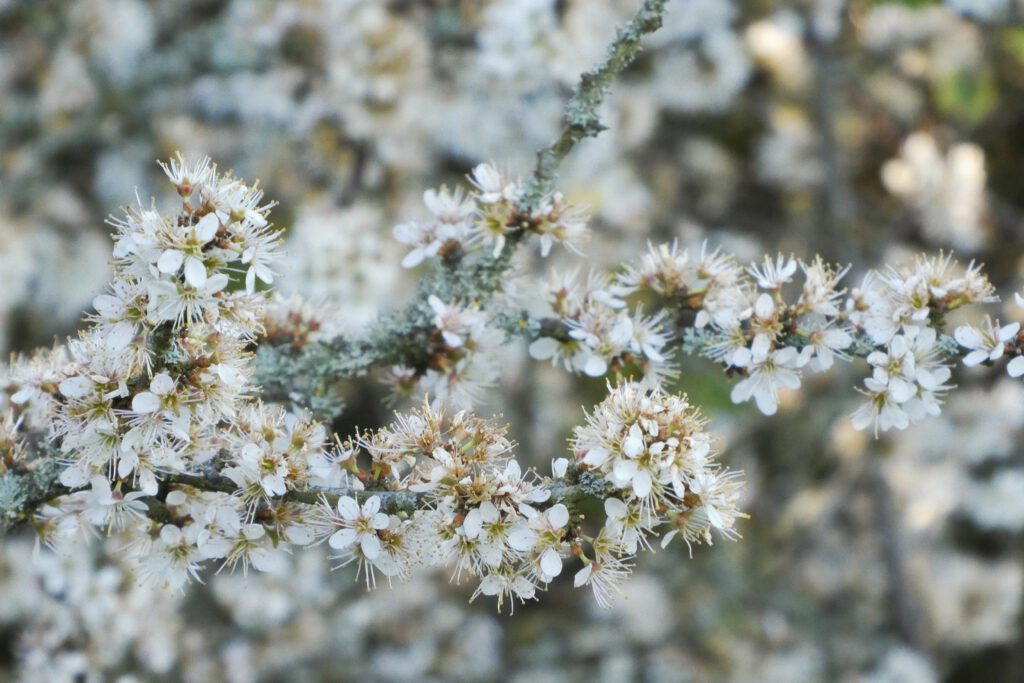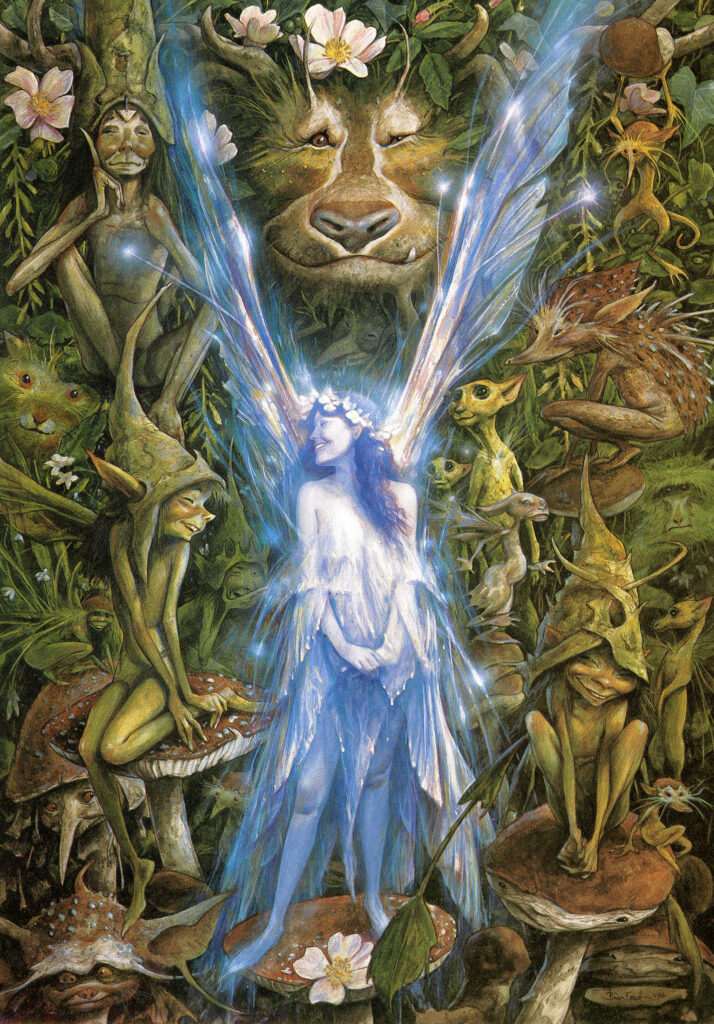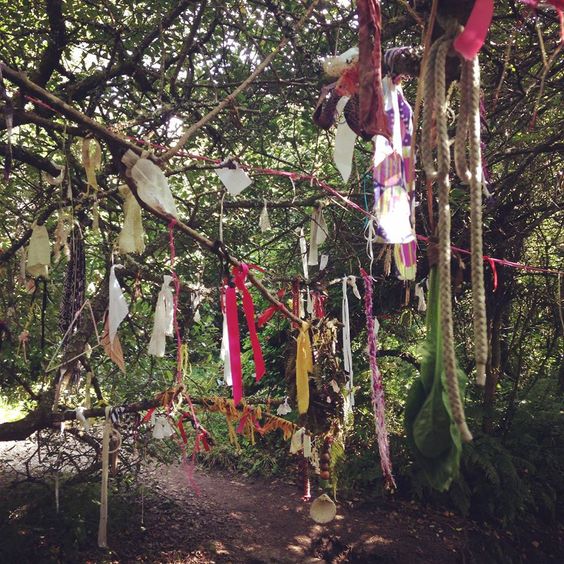


Druid’s are known for their Tree Lore – their connection to the trees. They support tree-planting and reforestation. Ceremonies and rituals would be performed in Sacred Groves in the forest, as well as that these groves offer a space for meditation, prayer or to commune with nature. Trees are bridges between the lower, middle and upper worlds and we as humans are very much like them. We can turn to the trees to ask for wisdom, guidance and protection. They are great listeners too. Trees help too clean up the energies in an area. They are the witnesses of the transformations and events that happen in the land and therefor record keepers and guardians of the forest.
Every 11th of the month we will introduce you to a different tree from the Ogham Tree Alphabet. To learn from the trees and walk in their ways. Rooting ourselves deeply into fertile grounds and to connect high with clear skies above…

Hawthorn, heart and fear at balance live here,
your thorns, berries and leaves creating a radiant atmosphere
Igniting the heart's desire,
To relieve pain and fear,
that the heart knows so dear,
to once again inspire
with words and actions
changing our reflections
shaping the world in which we live
loving everything that arises,
learning to forgive ...
We finding ourselves in the midst of summer. We see blossoms turn into fruits and on August 2nd we celebrated Lammas, the first of three harvest festivals.
Druids keep an eye on the Hawthorn tree in spring, as its first blossoms mark the beginning of Summer.
As the blossom of the Hawthorn turns into red berries, their color is associated with the heart, blood and it is these areas in the human body, for which Hawthorn provides its medicine. Plants with thorns are said to be useful for sharp pain in the body. Pain is not unfamiliar to our hearts and once we know the ache of a thorn in our heart, it can provoke the fear of being hurt once again…
The botanical name of the Hawthorn is ‘crataegus’, from the Greek word ‘Kratos’ which means ‘strength’. We can use the strength of Hawthorn to overcome our fears and invoke the gentleness of our hearts back into our lives.

When you see a Hawthorn growing near Oak & Ash, it is very likely to encounter fairies. Especially when there is a spring or well nearby, it indicates a doorway into the Land of the Fae. These light-hearted beings are little masters of spontaneity & playfulness, qualities that sooth the heavy hearted - opening the heart for wonder and joy.
The lightness of the fairies and the fiery energy of the Sun in Leo inspire us to be open to life and approach it as an adventurous game to play, envision what we are calling in and put our intentions into inspired action with childlike curiosity and spontaneity.

Hawthorns sometimes are found next to ‘clootie wells’ – holy wells are places were people are hanging cloth rags on a hawthorn tree as an offering of their prayers and intentions to the elements of nature. These clooties were used to invoke prayer of that what wants be manifested for the future or to be released from the past. The poets of the old days, also known also fili or bards, used to art of incantation, the power words, to cast spells to either invoke good fortune or cause bad luck. They were even said to be able to ‘rhyme to death’ humans and animals.
The fili had to master three magical techniques in order to utter prophecy, answer questions and to manifest that which he or she desired. These were known as:
“Imbas Forosnai” - “illumination between the hand” or “palm knowledge of enlightening”. The poet chewed a bit of raw flesh of a red pig or cat, laid it on a stone, sang an incantation over it, invoked the gods and then went to sleep with his two palms against his cheeks. He was watched over so that his sleep would not be disturbed and would wake with the answer to his question.
“Teinm Laegda” – “extempore recitation, illumination of song”. The poet would put his thumb into his mouth and chant, going into a trance in which ‘Imbas’ (a flash of poetic inspiration or enlightenment) comes to him and he starts to recite.
“Dichetal do chennaib” – “recital from the ends of the fingers”. This involved the spontaneous uttering of a prophecy or a poem with no preliminary ritual other than some kind of mnemonic use of the fingertips.
Like the poets, so are we capable of tapping into a field which can not be known by the mind, but is felt deeply by the heart and from which spontaneous ideas, insights, inspiration and answers arise.

The ancient poets, casting their spells in the company of Hawthorn trees, and because of the satire they used, hawthorn has become related to fear just as much as it is related to the medicine of the heart to overcome fear.
The way we speak (and think) about ourselves or others, can be a blessing or a curse. When we find ourselves in being judgemental or falsely accusing people, we are actually projecting a low vibration onto someone else, while when we can shift this frequency of blame and shame into a more heart centred incantation of praise to that same person, we are calling out the good in all people and by doing so, calling out the goodness of our own hearts. Eventually it is the power of forgiveness with which we can rise above our suffering, opening our hearts again to love. Allowing ourselves to be tickled by the spark of a fairy and giggle our way through the wonderments of life…
Sign up for our Druid’s letter